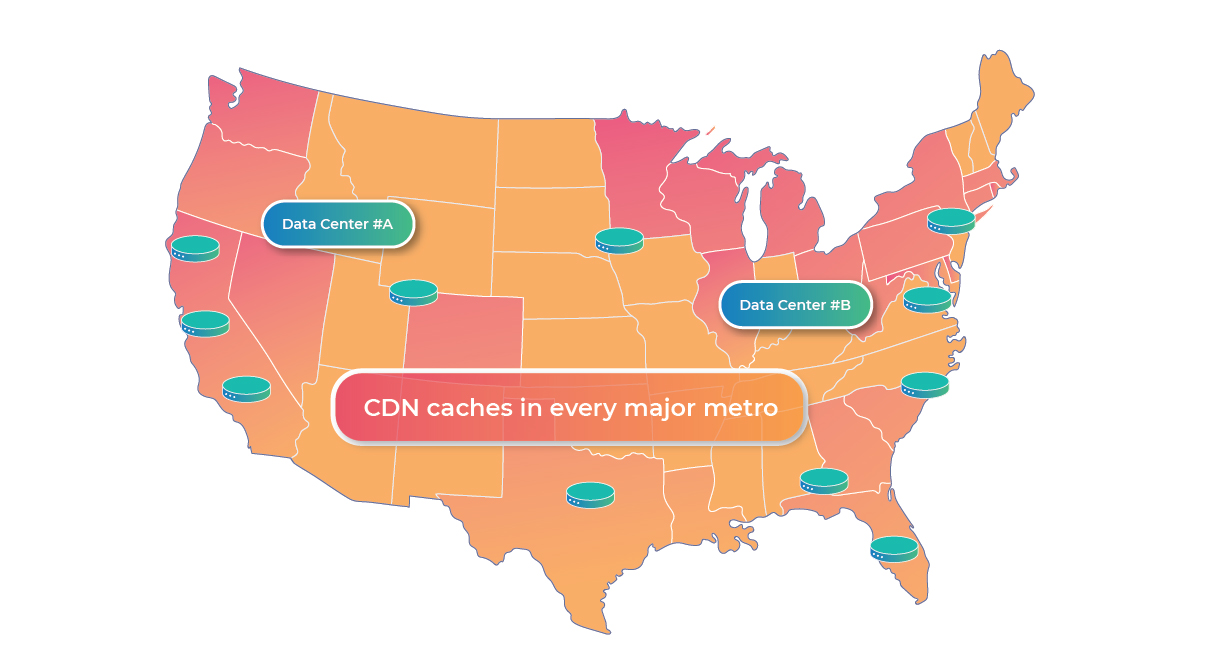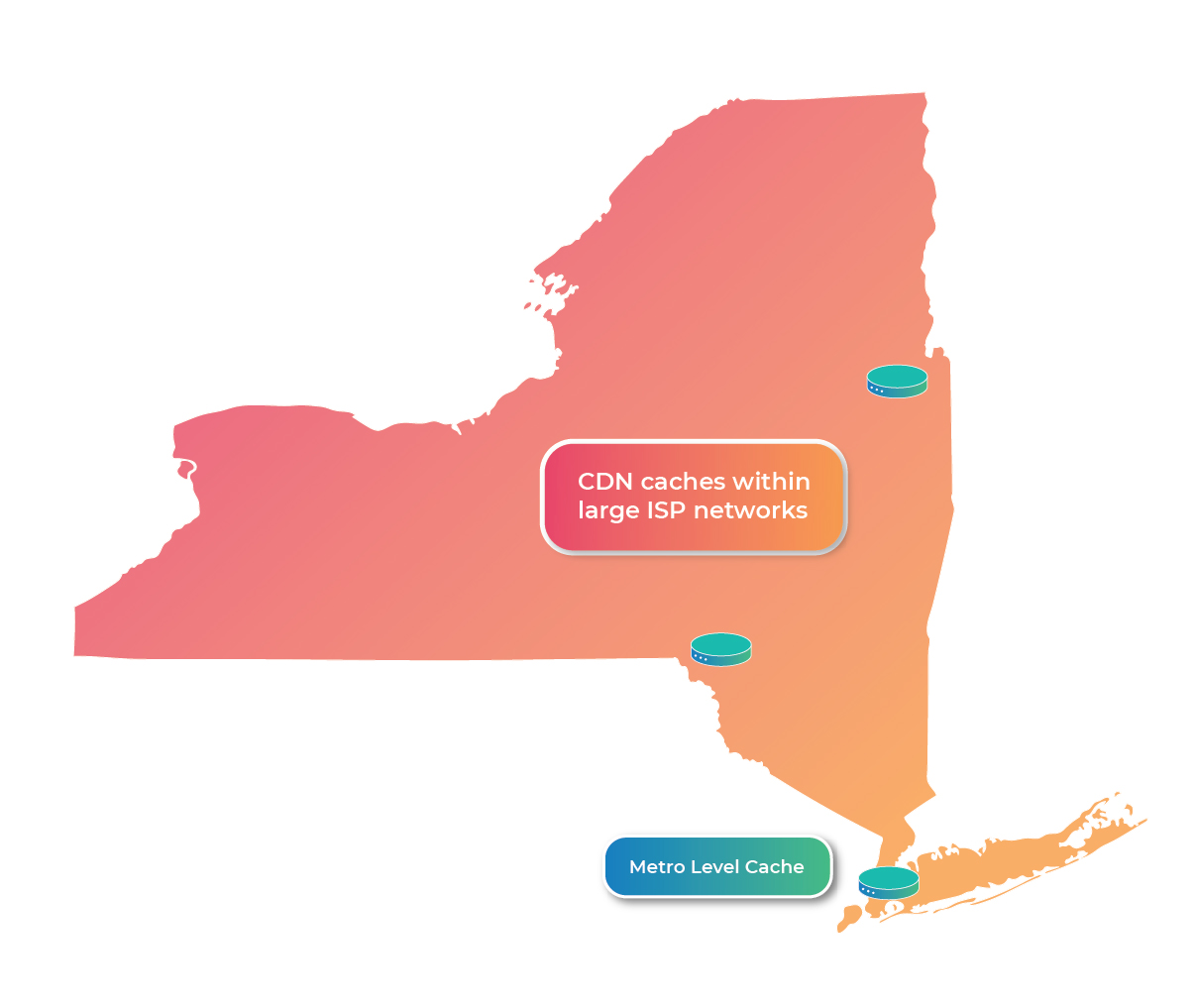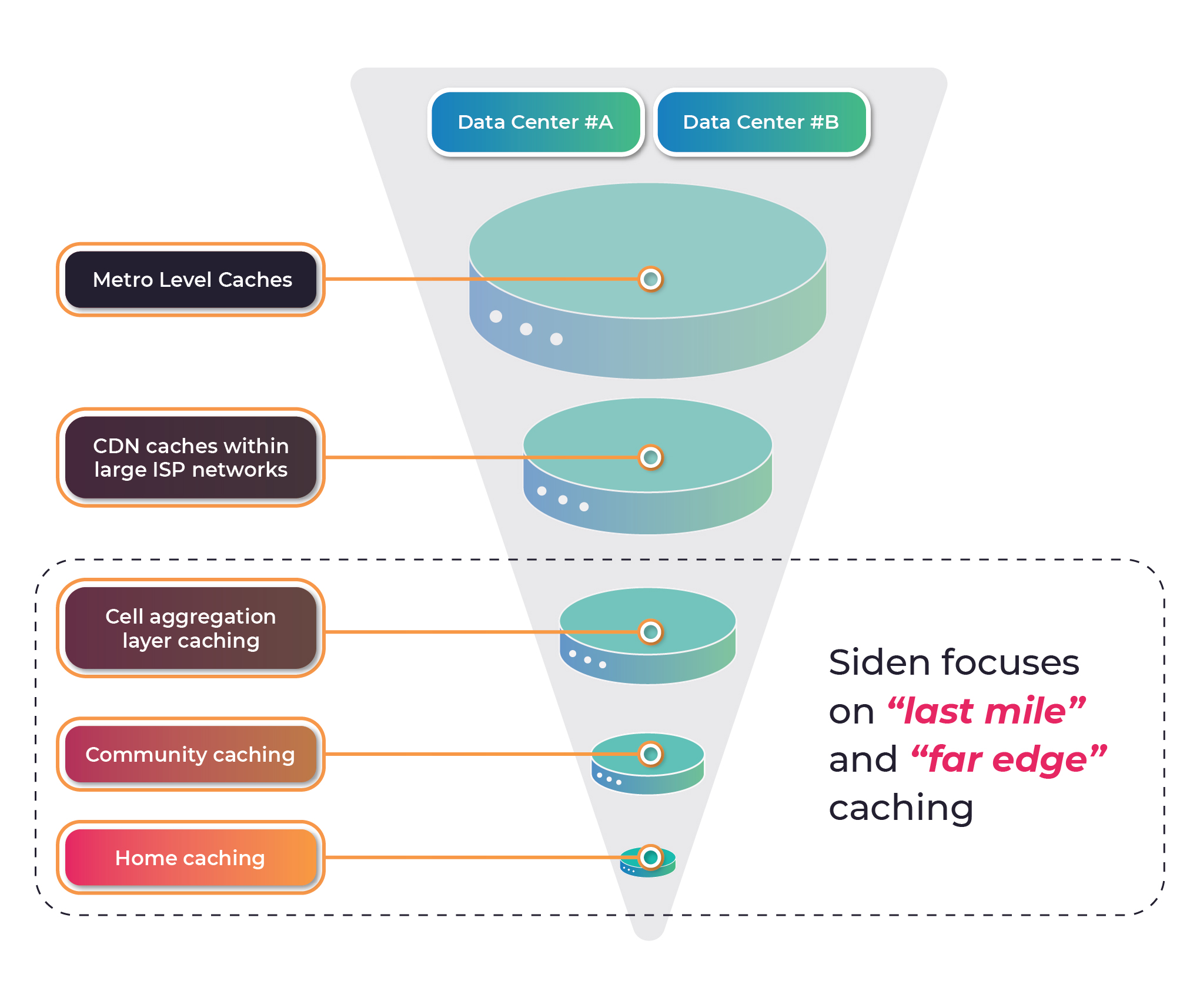Overview
Edge caching is a technique to enhance the overall user experience for content-rich services, like streaming video, by temporarily storing high-demand content as close to your users as possible. This improves the performance and reliability of the service, two key components of the user experience. Edge caching also reduces costs.
The Basics
In modern digital services, data is stored in central servers, called origin servers, and accessed remotely by users over the Internet. This is true for websites, online stores, video and music streaming services, and many more.
To improve user experience, the companies operating these digital services often use content delivery networks, or CDNs, to assist in delivering content. And CDNs operate large networks for edge caches in many locations around the world. (In the US, this could include dozens of metro areas such as Alexandria, Chicago and Los Angeles.)
Edge caches must strategically select which content assets to temporarily store because of their limited storage capacity relative to the origin server. The typical approach is to cache the most popular – most frequently requested – content, and refresh it over time as content catalogs evolve.
Once a piece of content is cached at an edge cache, other users in that same area requesting that same content get it from that cache rather than the origin server. Since the edge cache is physically closer than the origin, the content is delivered faster and because there are many possible edge caches to serve the content, it’s also delivered more reliably. Additionally, since the content doesn’t have to traverse the Internet, you don’t pay transit costs and avoid the risk of congestion.
How Close to the Edge Should You Cache?
Commercial CDNs typically operate edge caches in regional data centers in metro areas (at special points where many networks exchange data). When users in a region request content, those requests are served from edge caches within the region, avoiding going a long distance, including across the country, to the origin server.
Caching in Major Metropolitan Areas

More recently, some CDNs have deployed edge caches within an Internet Service Provider (ISP) network, moving them even closer to the service’s users. In certain cases this may be enough. But when users are mobile, such as onboard an aircraft or ship, it’s possible to bring the edge cache even closer – bring it on board. In these cases, even a regional CDN cache is on the other side of a constrained access network (e.g. satellite). On-board edge caching becomes essential for delivering a quality user experience.
Example of ISP Level Caching Within New York State

Siden is Re-defining the Edge
Beyond just edge caching, Siden offers “far-edge caching”, which is caching even deeper within networks. This technology is appropriate for distribution networks that are congested during certain predictable periods of the day or are inaccessible for certain periods.
Some applications for Siden’s technology include:
- Airplanes
- Cruises
- Trains
- Buses
- Wireless home Internet
- Cellular network aggregation points
By implementing far-edge caching, Siden enables operators to deliver more relevant content, more frequently, to more customers, all while using the same underlying network resources. Siden’s far-edge caching expands the utility of underlying access networks.
Caching Hierarchy Overview

About Siden
Founded in 2018, Siden is at the forefront of revolutionizing connectivity in the aviation, maritime, and home broadband industries. Siden optimizes connectivity platforms through intelligent caching to provide end-users with more content from a wider array of partners, all in higher quality and without escalating network costs. Siden’s innovative approach not only boosts user satisfaction but also optimizes network efficiency, reducing operational costs for service providers.
For more information on how we can help you deliver an excellent experience for your customers, contact us.





